
This Gun for Hire was released on May 13, 1942. It is the movie that made Alan Ladd a star, and it is noteworthy to movie fans – particularly those enamored with film noir – because it marks the first on-screen pairing of Ladd and co-star Veronica Lake.
On movie posters for the film, Ladd receives fourth billing. Lake was the bigger star, so she comes first. Next is Robert Preston, who would remain a reasonably popular actor through the 1980’s. Third billing went to Laird Cregar, then came Ladd. The opening credits announce “And Introducing Alan Ladd as Raven,” so it’s pretty clear something is up before the film even starts. Ladd was being “introduced,” although he already had some 20 movie appearances including four where he received after-movie credits. One of these was as a pipe-smoking reporter in the film Citizen Kane (1941). He made his film debut in 1939 at the age of 26.
Before his appearance in Citizen Kane, Ladd gained a new Hollywood agent who would help guide his career until his death. Her name was Sue Carol, who would become Mrs. Alan Ladd on March 15, 1942, two months before the release of This Gun for Hire. Gossip at the time noted their age difference: Sue Carol was 10-years older.
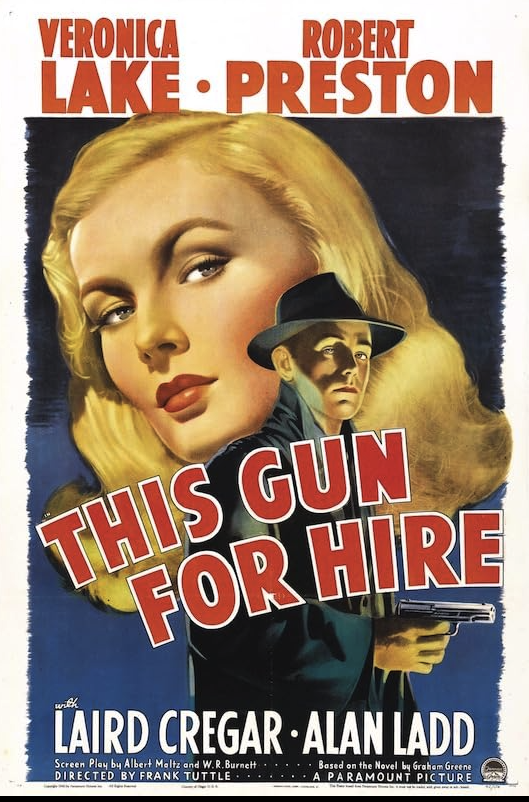
Up until this time, Ladd had lived a life marked with hardship. Born in Arkansas in 1913, his father died when he was a child, and his childhood home was destroyed by fire. His widowed mother married again and the family ultimately relocated to California. Ladd recalled they lived in poverty, subsisting on potato soup for days. His step-father ultimately landed a job painting sets for the movie studios, and Ladd followed suit, first working as a grip before moving on to bit parts.
During this time, he had married his high school girlfriend and had a son, but changes were ahead. His mother died, an apparent suicide after taking ant poison. Ladd’s high school nickname was Tiny, a sobriquet he reportedly hated. His official height was listed by the studios as 5 ft. 6 inches.
In 1942 he was 29 years old with bright blonde hair and, in his own description, the face of a choirboy. He was slender but athletic, taciturn with a warm smile, handsome.
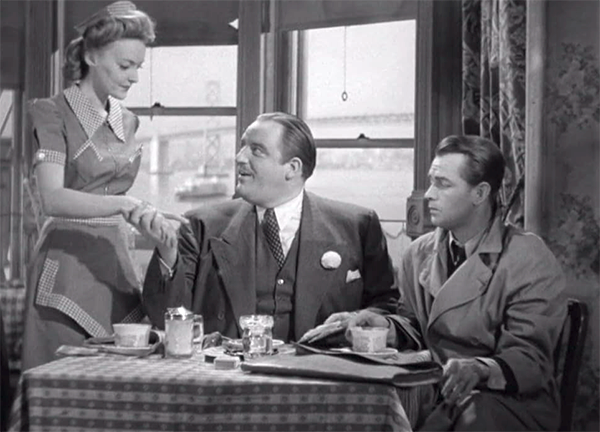
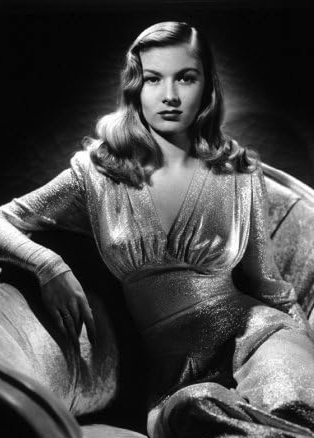
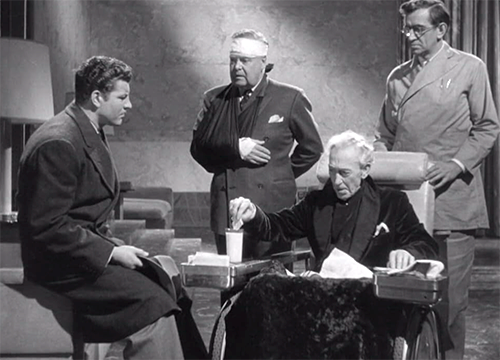
The Hollywood story is that Ms. Carol saw in him something that could be guided toward better things, got him the part in Citizen Kane, then directed his career from that point. This Gun for Hire, adapted from a Graham Greene novel, was a big success. Movie fans loved the chemistry of Ladd and his co-star Veronica Lake. They would pair for six more films including three that are considered film noir classics, The Glass Key, released a few months after This Gun for Hire in 1942, and The Blue Dahlia (1946). Ladd is perhaps best remembered for his performance in Shane (1953), a movie listed as among the finest Westerns ever filmed.
Ladd and Sue Carol remained married up until his death in 1964 at age 50. The autopsy report concluded that he died from cerebral edema caused by an overdose of alcohol and drugs. The death was ruled accidental. A few months earlier Ladd had “accidentally” shot himself in the chest, so rumors of a possible suicide followed his death. This Gun for Hire was directed by Frank Tuttle. His version emphasizes the outright strangeness of the lead character.
Modern reviews of the film sometimes characterize Raven as a sadist or a sociopath. He kills people and feels nothing. Those who have not seen the film might wonder, “What about Veronica Lake?” Truth be told, there isn’t a lot of romance between the two. Ladd’s Raven considers “bumping off” her character – a nightclub entertainer named Ellen Graham – before they form a brief relationship that physically never goes beyond a peck on the cheek.
Their best scene has the pair hunkered down in a railroad yard, surrounded by the police. Ellen Graham is Raven’s prisoner (he has rescued her from the traitor played by Laird Cregar), and they are on the run as Raven seeks revenge against Cregar, who has double-crossed the gunman in the opening scenes. “Why don’t you sleep?” Lake’s character asks Raven. Ladd replies he doesn’t want sleep because sleep brings dreams. Specifically, he dreams “about a woman. She used to beat me. Whip the bad blood out of me. My Aunt. She hit me with a red-hot flat iron. Snapped my wrist with it. I got the knife and let her have it.” From that point, he says, society “Stuck a label on me – killer — and stuck me in a reform school. And they beat me there too.” At this point in the movie, Ladd’s Raven has killed in cold blood a blackmailing chemist and the chemist’s slutty girlfriend.
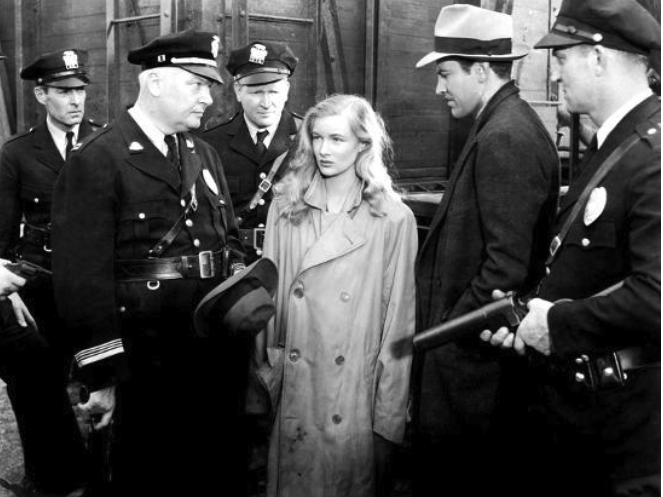
The gunman’s secrets come to light at a crucial point in their escape. Raven has been forced to kill a meowing cat to avoid being found by the police. From the movie’s opening scene, viewers know that cats are the only animals Raven admires, so he takes this death hard.
“Cats bring you luck,” Ladd says. “They don’t need anybody.” After he is forced to smother the cat to avoid detection, Ladd’s character briefly breaks down: “I killed my luck,” adding he would “like to crawl down there with you and sleep.” The scene contrasts with the cold-blooded killer on display up to this point, and it likely connected with audiences at the time.
He was cool on the surface, cool to the touch, but something was going on inside his head and you probably didn’t want to know about it. Ladd is very believable in the scene.
The movie’s plot is a little bit jumbled and jivy. Suffice to say the killer is redeemed somewhat since the real bad guys – they are trying to deliver a poison gas to enemy agents – meet their just desserts. Laird Cregar is very “Laird Cregary.” His evil boss, Mr. Brewster, gets to stew about safety for his employees — “all the family I have” –between bites from a white cracker dipped periodically into white milk. Our gunman dies in a hail of bullets, but not before he gets to ask Lake, “Did I do alright by ‘ya?”
